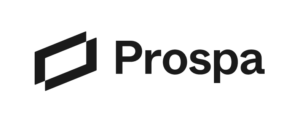Disclosure: This post contains sponsored links whereby we may receive a commission for any purchases made. The following is general information only and should not be considered financial advice.
Navigating the world of business finance can feel daunting, especially when you’re running an industrial operation in Australia. Whether you’re managing a manufacturing plant, operating a logistics hub, or scaling a wholesale business, access to the right funding is critical for staying competitive and fueling growth.
Industrial business loans in Australia are specifically designed to meet the unique needs of businesses in sectors like manufacturing, construction, logistics, and warehousing. From purchasing heavy machinery to securing commercial property, managing cash flow during expansion phases, or funding major renovations, these financing options provide the capital required to keep operations running smoothly and drive long-term success.
With so many loan types available, each with its own structure, benefits, and eligibility criteria, knowing which financing option aligns with your business goals is essential. In this guide, we’ll walk through some essential industrial business loans available in Australia, helping you understand how each works, what they’re best suited for, and how to leverage them to support your growing business.
Top Loan Platforms For December 2025
1) Australian Loan Finder

Australian Loan Finder is an Australian-owned business finance provider helping local small businesses access fast, flexible, and transparent funding through partnerships with reputable Australian lenders. Unlike traditional banks or generic loan marketplaces, Australian Loan Finder offers a direct, streamlined approach to business finance—acting as your dedicated finance partner from application to funding. Businesses can apply online in just 2 minutes, with loans available from $5,000 to $500,000, and receive personalised funding options designed around their needs. For eligible borrowers, no upfront security is required on loans under $150,000, and decisions can be made within hours—with funds often available in as little as 24 to 72 hours.
With fixed, transparent pricing, loan terms between 3 months and 5 years, and flexible repayment schedules that align with your cash flow, Australian Loan Finder gives business owners the clarity and control they need to grow confidently. Whether you’re managing day-to-day operations or investing in expansion, Australian Loan Finder simplifies access to funding—so you can focus on what matters most: running your business.
2) Lumi

Introduction to Lumi
Lumi stands at the forefront of small business financing solutions in Australia, offering a robust platform that prioritizes flexibility and transparency.
With a commitment to empowering businesses, Lumi provides unsecured loans ranging from anywhere from $5,000 to $300,000, helping to simplify the lending process for entrepreneurs.
Lumi Business Loan Application Process
- Quick:Simple online application process to submit your information and the type of loan your after to get started
- Simple: Simply gather your ABN/ACN, driver’s license, and bank details and find out pretty quick if your approved
- Fast: Approval can come as fast as 2 hours, and funding can hit your account within the same business day
Features of Lumi Business Loans
- Loan Amount Flexibility: Borrowers can access loans ranging from $5,000 to $300,000, accommodating diverse business needs
- Speedy Application and Approval: Lumi’s emphasis on quick processing allows applicants to receive funds within the same business day, facilitating timely responses to business opportunities
- Transparent Fee Structure: Lumi sets itself apart with minimal fees, notably a 2.5% establishment fee, providing clarity and predictability for borrowers
- Unsecured Loans: With a focus on inclusivity, Lumi offers unsecured business loans, eliminating the need for collateral for amounts up to $300,000
- Flexible Repayment Options: Weekly repayment frequencies, principal and interest repayment types, and the option for extra repayments contribute to a borrower-friendly repayment structure
- Early Repayment Benefits: Lumi distinguishes itself by allowing borrowers to pay off their loans early without incurring penalties. Early payout options and discounts are available, with principal-only payouts accessible after 6 months
- Eligibility Criteria: Lumi caters to businesses that are at least six months old, with a minimum annual turnover of $50,000, establishing accessibility for a broad range of enterprises

3) Prospa

Overview of Prospa
Navigating the landscape of small business loans in Australia? Prospa is another solid contender in the market across both Australia and New Zealand. Prospa provides small business owners with a quick and simple way to obtain financing, and it has already assisted thousands of Australian small enterprises. Prospa received the Deloitte Tech Fast 50 in 2015, after increasing by 6071% in three years, making it Australia’s fastest growing technology firm and Asia’s third quickest. Prospa was a Telstra Business Awards finalist in 2015 and ranked 33rd globally as a leading innovator in KPMG’s Fintech 100.
How Prospa Small Business Loans Work
Prospa offers loans from $5,000 up to $500,000 for cash flow or growth. You can apply online in about 10 minutes and often get a decision the same day (with funds possible in 24 hours).
No upfront security is needed for loans under $150,000. Loan interest rates vary based on your business and are calculated upfront. This helps you to know the total cost before you borrow. Early repayment options are available to save on interest.
Benefits of Prospa Business Loan
Choosing Prospa for your business financing needs means opting for a partner who understands the nuances of small Australian businesses.
Simple Application Steps: Prospa ensures a straightforward application process that respects your time and urgency. With an online form that takes around 10 minutes, you’re on your way to financial support without unnecessary delays.
Flexible Loan Uses: Prospa allows you to utilize the loan for various business objectives, from buying supplies to expanding your team or renovating your workspace. Your business, your choices.
Variable Loan Durations: With loan periods ranging from 3 months to 3 years, Prospa caters to different business needs. Whether you want a short-term loan (boost) or a more extended financial support plan, Prospa offers flexibility.
Modular Payment Schedules: Prospa understands that one repayment schedule doesn’t fit all. You have the freedom to schedule repayments based on your business’s cash flow, choosing between weekly and daily payments.
Quick Approval and Funding: Prospa lives up to its promise of being swift. A 10-minute online application, coupled with approval possible within the hour depending on your scenario ensures you don’t miss out on capital.
Prospa’s business loans offer numerous advantages:
- Streamlined application: The online form takes only 10 minutes to complete, respecting your time and urgency.
- Versatile loan purposes: Use funds for various business objectives, including purchasing supplies, expanding your team, or renovating your workspace.
- Flexible loan terms: Choose from loan periods ranging from 3 months to 3 years, tailored to your specific business needs.
- Customisable repayment options: Schedule repayments based on your business’s cash flow, with weekly and daily payment options available.
- Rapid approval process: Depending on your situation, approval is possible within an hour of application submission.
1. Equipment Finance Loans
For industrial businesses, equipment is the backbone of operations. Whether it’s forklifts, CNC machines, heavy vehicles, or specialized manufacturing tools, the cost of essential machinery can be substantial. Equipment finance loans provide a practical pathway to acquire these assets without draining your cash reserves.
How Equipment Finance Works for Industrial Businesses
Equipment finance allows businesses to spread the cost of machinery and equipment over time, rather than paying the full amount upfront. These loans are typically structured as either leases or chattel mortgages.
- Chattel Mortgage: You own the equipment from day one, with the lender holding security over the asset until the loan is repaid. This structure is popular among businesses looking to claim GST and depreciation benefits.
- Finance Lease: The lender owns the equipment during the lease term, and you make regular payments. At the end of the term, you may have the option to purchase the asset, extend the lease, or return it.
- Operating Lease: Similar to a rental agreement, this option suits businesses that need equipment for a fixed period without the intention of ownership.
Equipment finance is particularly useful for industrial businesses that need to upgrade or replace machinery regularly to maintain productivity and meet safety standards.
Tax Benefits and Asset Protection
One of the standout advantages of equipment finance is the range of tax benefits available to Australian businesses. Depending on the structure you choose, repayments may be tax-deductible as a business expense. Also:
- GST claims: If your business is registered for GST, you can often claim back the GST paid on the equipment upfront.
- Depreciation deductions: Under a chattel mortgage, you can depreciate the asset over its effective life, reducing your taxable income.
- Interest deductions: The interest portion of your repayments is generally tax-deductible.
Beyond tax advantages, equipment finance protects your operating capital. Instead of depleting your cash reserves or draining your working capital line, you preserve liquidity for day-to-day expenses, payroll, and unforeseen costs. This financial flexibility is crucial for industrial businesses navigating fluctuating demand or expansion phases.
2. Commercial Property Loans
Owning your business premises, whether it’s a warehouse, factory, or logistics facility, can be a game-changer for industrial operations. Commercial loans provide the capital needed to purchase or develop industrial real estate, offering long-term stability and potential for asset appreciation.
Warehouse and Factory Purchase Options
Commercial property loans are tailored to help businesses acquire spaces suited to their operational needs. Industrial buyers typically look for:
- Warehouses: Ideal for storage, distribution, and light manufacturing.
- Factories: Purpose-built spaces for heavy manufacturing and production.
- Logistics hubs: Facilities near transport routes for efficient supply chain management.
Lenders assess applications based on the property’s income-generating potential, location, and the borrower’s financial position. Industrial property loans often come with both variable and fixed interest rate options, giving businesses flexibility depending on their risk tolerance and cash flow forecasts.
Typical Loan Terms and Deposit Requirements
Commercial property loans in Australia generally have the following features:
- Loan terms: Range from 1 to 30 years, with longer terms available for established businesses with strong financials.
- Deposit requirements: Typically between 20% and 30% of the property’s purchase price, though some lenders may require more depending on the borrower’s creditworthiness and the property’s valuation.
- Interest rates: Commercial rates are usually higher than residential mortgages but remain competitive within the business lending market.
Owning your premises not only eliminates rental costs but also builds equity over time. It can improve your balance sheet, provide collateral for future borrowing, and offer operational control, such as the freedom to modify the space without landlord approval.
3. Working Capital Loans
Industrial businesses often face cyclical demand, seasonal fluctuations, or growth spurts that strain cash flow. Working capital loans provide the short-term funding needed to cover operational expenses, bridge gaps, and seize opportunities without disrupting day-to-day activities.
Managing Cash Flow During Growth Phases
Working capital loans are designed to support businesses through periods when cash is tied up in inventory, receivables, or expansion projects. Common uses include:
- Payroll and staffing: Ensuring employees are paid on time, even when invoices are outstanding.
- Inventory purchases: Buying raw materials or stock in bulk to meet increasing demand or take advantage of supplier discounts.
- Unexpected expenses: Covering emergency repairs, equipment breakdowns, or urgent compliance costs.
- Bridging payment gaps: Managing the lag between fulfilling orders and receiving payment from clients.
These loans are typically flexible, with terms ranging from a few months to a couple of years. They can be structured as term loans, lines of credit, or revolving facilities, depending on the business’s needs.
For industrial businesses experiencing rapid growth or scaling operations, working capital loans provide the breathing room needed to invest in new contracts, hire additional staff, or expand production capacity, all without jeopardizing existing commitments. The key is to use this financing strategically, ensuring that the capital drives revenue growth rather than simply covering persistent shortfalls.
4. Asset-Based Lending
Asset-based lending (ABL) is a powerful financing option for industrial businesses with significant physical assets or outstanding invoices. By leveraging inventory, receivables, or equipment as collateral, businesses can unlock capital that’s otherwise tied up in their operations.
Using Inventory and Receivables as Collateral
Asset-based loans allow businesses to borrow against the value of their assets. This is particularly useful for industries where capital is locked in stock or slow-paying clients. The two most common forms are:
- Inventory financing: Borrow against the value of raw materials, work-in-progress, or finished goods. This is ideal for manufacturers and wholesalers who need cash to fulfill large orders or manage seasonal inventory.
- Receivables financing: Use outstanding invoices as collateral. Rather than waiting 30, 60, or 90 days for payment, you can access a percentage of the invoice value immediately.
Best Suited Industries for Asset-Based Loans
Asset-based lending is particularly well-suited to industries with:
- High inventory turnover: Manufacturing, wholesale, and distribution businesses.
- Significant receivables: Companies that operate on credit terms with clients, such as construction contractors, logistics providers, and suppliers.
- Tangible assets: Businesses with machinery, vehicles, or equipment that can serve as secondary collateral.
ABL offers flexibility and speed, often with less stringent credit requirements than traditional loans. It’s a practical solution for businesses that need working capital but may not qualify for unsecured financing or prefer not to dilute equity by bringing in investors.
5. Trade Finance and Invoice Factoring
For industrial businesses managing lengthy payment cycles or international trade, trade finance and invoice factoring provide essential cash flow solutions. These financing methods accelerate access to working capital, enabling businesses to maintain operations and pursue growth opportunities without waiting for client payments.
Accelerating Cash Flow with Invoice Finance
Invoice factoring (also known as invoice finance or debtor finance) allows businesses to sell their unpaid invoices to a lender or factoring company in exchange for immediate cash. Here’s how it typically works:
- You issue an invoice to your client with standard payment terms (e.g., 30 or 60 days).
- The lender advances funds, usually 80% to 90% of the invoice value, within 24 to 48 hours.
- Your client pays the lender when the invoice is due.
- You receive the remaining balance, minus the lender’s fee.
This financing option is particularly valuable for:
- Bridging cash flow gaps: Ensuring you have funds to cover payroll, suppliers, and operational costs while waiting for client payments.
- Supporting growth: Allowing you to take on larger contracts or new clients without worrying about extended payment terms.
- Managing creditworthy but slow-paying clients: Even reliable clients can have long payment cycles: factoring ensures you’re not left waiting.
Invoice factoring is common in industries like manufacturing, construction, logistics, and wholesale distribution, anywhere businesses operate on credit terms. It’s a flexible, fast solution that doesn’t require giving up equity or taking on traditional debt, and it scales with your sales: the more invoices you generate, the more funding is available.
6. Government-Backed Business Loans
The Australian government recognizes the critical role that small and medium enterprises (SMEs) play in the economy, and has introduced programs to support businesses that may struggle to secure traditional financing. Government-backed loans can increase approval chances, reduce risk for lenders, and provide more favorable terms for eligible businesses.
Eligibility Criteria and Application Process
To qualify for government-backed business loans in Australia, businesses generally need to:
- Hold an active Australian Business Number (ABN) and operate primarily in Australia.
- Meet turnover thresholds: Typically under $50 million in annual revenue, though this can vary depending on the specific program.
- Demonstrate a viable business plan: Lenders will assess your ability to repay the loan based on cash flow, business model, and financial history.
- Apply through approved lenders: Not all banks and financial institutions participate, so it’s important to check which lenders are part of the scheme.
The application process is similar to standard business loans but may involve additional documentation to verify eligibility for the government guarantee. Working with a broker or financial advisor familiar with these programs can streamline the process and improve your chances of approval.
7. Unsecured Business Loans
Unsecured business loans provide fast access to capital without requiring collateral, making them an attractive option for businesses that lack significant assets or need funding quickly. But, they come with trade-offs, including higher interest rates and lower borrowing limits.
When to Consider Unsecured Financing
Unsecured loans are best suited for specific situations, such as:
- Speed is a priority: Unsecured loans can often be approved and funded within days, compared to weeks or months for secured loans. This makes them ideal for urgent needs like emergency repairs, time-sensitive opportunities, or bridging short-term cash flow gaps.
- No assets to offer as security: Newer businesses or those operating from leased premises may not have property or equipment to pledge as collateral.
- Smaller funding needs: Unsecured loans typically range from $10,000 to $500,000, making them suitable for smaller investments or working capital needs rather than large capital projects.
- Avoiding asset risk: Some business owners prefer not to put personal or business assets on the line, especially if the loan is for a higher-risk venture or experimental project.
Because lenders take on more risk with unsecured loans, they compensate by charging higher interest rates and conducting more rigorous assessments of the borrower’s creditworthiness, cash flow, and business history. Businesses with strong revenue, solid credit scores, and demonstrated profitability are more likely to qualify for competitive rates.
While unsecured loans offer flexibility and speed, they should be used strategically, ideally for short-term needs or investments with a clear, fast return. For larger, long-term projects, secured financing options usually offer better value.
8. Construction and Fit-Out Loans
Industrial businesses looking to renovate, expand, or custom-build facilities can access specialized construction and fit-out loans. These loans are designed to fund projects ranging from warehouse extensions and factory upgrades to complete new builds.
Funding Industrial Renovations and Expansions
Construction and fit-out loans are structured to match the stages of a building project, with funds released progressively as milestones are reached. This ensures that capital is available when needed and reduces the risk for both borrower and lender. Common uses include:
- Warehouse expansions: Adding storage capacity, mezzanine levels, or loading docks to support growing inventory and logistics needs.
- Factory renovations: Upgrading production lines, installing new machinery, or improving energy efficiency and workplace safety.
- Fit-outs: Customizing leased or purchased spaces to meet specific operational requirements, such as office areas, clean rooms, or specialized production zones.
- New construction: Building a purpose-designed facility from the ground up, tailored to your business’s unique needs.
Lenders typically release funds in stages (known as progress payments or drawdowns) based on builder invoices, inspector reports, or completion certificates. This staged approach helps manage cash flow and ensures the project stays on track.
Key considerations when applying for construction loans include:
- Detailed project plans and budgets: Lenders require comprehensive documentation, including architectural plans, cost estimates, and timelines.
- Qualified builders and contractors: Using licensed, insured professionals strengthens your application.
- Adequate deposits: Construction loans may require deposits of 20% to 30%, similar to commercial property loans.
- Interest-only periods: Many lenders offer interest-only repayments during the construction phase, with principal and interest repayments commencing once the project is complete.
Construction and fit-out loans empower industrial businesses to create facilities that drive efficiency, support growth, and enhance competitiveness, all while preserving working capital for day-to-day operations.
Conclusion
Industrial business loans in Australia offer a diverse range of financing solutions tailored to the unique challenges and opportunities facing manufacturing, logistics, warehousing, and construction businesses. From acquiring essential equipment and securing commercial property to managing cash flow and funding major expansions, the right loan can be the catalyst for growth and long-term success.
Understanding the differences between equipment finance, working capital loans, asset-based lending, invoice factoring, government-backed schemes, unsecured loans, and construction financing allows business owners to make informed decisions that align with their strategic goals and financial position.
Before committing to any loan, take the time to assess your business’s needs, compare lenders, and consult with financial advisors or brokers who specialize in industrial financing. With the right funding in place, you can invest confidently in your operations, seize growth opportunities, and build a resilient, competitive business in Australia’s dynamic industrial landscape.
Note: This is not financial advice and is just designed to provide general information. While we run our own checks and assess each company included on our website, we may not have covered all options. If you decide to apply for a product, you will interact directly with the vendor, not AGR Technology. AGR Technology suggests that you read the appropriate PDS or offer documents before accepting any financial product offer to assess whether the products are suitable for you. Target Market Determinations are available on the provider’s website.
AGR Technology may receive a commission on sales generated by partner links on this page, but this has no influence on our opinions or evaluations and is completely free of charge to you. While we make every attempt to keep our content up-to-date this should not be taken as financial advice, be sure to seek professional advice if required.
Factors considered when writing this article:
We set criteria for picking loan platforms to analyse, such as reputation, services offered, user base, regulatory compliance, types of loans available and the years of operation along with browsing the respective websites to validate they have licences and compliance to operate in Australia, as well as other things like KYC protocols and contacting the companies.
Checked each platform for user-friendly design interfaces to ensure platforms are straightforward for beginners and more experienced customers to grasp. We obtained information about each company by visiting their separate websites, signing up for an account, reading user reviews, and looking for recent news or events related to the platforms.
Key Takeaways
- Industrial business loans in Australia provide specialized financing for manufacturing, construction, logistics, and warehousing operations to support growth and competitiveness.
- Equipment finance loans allow businesses to acquire essential machinery without depleting cash reserves, offering valuable tax benefits including GST claims and depreciation deductions.
- Working capital loans help industrial businesses manage cash flow during growth phases, covering payroll, inventory purchases, and bridging payment gaps between orders and client payments.
- Asset-based lending enables businesses to unlock capital by using inventory, receivables, or equipment as collateral, ideal for manufacturers and wholesalers with high inventory turnover.
- Government-backed business loans through the SME Guarantee Scheme can provide industrial businesses with up to $5 million in more favorable financing terms, even with limited collateral.
- Construction and fit-out loans fund industrial renovations and expansions with staged payments, allowing businesses to build or customize facilities while preserving working capital.
Frequently Asked Questions
What are industrial business loans in Australia used for?
Industrial business loans in Australia are used to purchase heavy machinery, secure commercial property, manage cash flow during expansion, fund renovations, acquire inventory, and support operations in manufacturing, construction, logistics, and warehousing sectors.
How does equipment finance work for industrial businesses?
Equipment finance allows businesses to spread machinery costs over time through chattel mortgages, finance leases, or operating leases. You can claim GST, depreciation deductions, and interest as tax-deductible expenses while preserving working capital for daily operations.
What is the typical deposit required for a commercial property loan in Australia?
Commercial property loans in Australia typically require a deposit between 20% and 30% of the property’s purchase price. The exact amount depends on your business’s creditworthiness, financial strength, and the property’s valuation by the lender.
Can I get a business loan without collateral in Australia?
Yes, unsecured business loans are available without collateral, typically ranging from $10,000 to $500,000. They offer fast approval but come with higher interest rates and require strong credit scores, solid cash flow, and demonstrated business profitability.
What is invoice factoring and how does it help cash flow?
Invoice factoring lets businesses sell unpaid invoices to a lender for immediate cash, typically 80–90% of the invoice value within 24–48 hours. This accelerates cash flow, helping cover payroll and operational costs without waiting for client payments.
Source(s) cited:
Invoice Finance for Quick Cash Flow [Online]. Valiant Finance. Available at: https://www.valiantfinance.com/business-loans/invoice-finance (Accessed: 25 October 2025).
(2024). Invoice Financing | Invoice Finance | Cashflow finance [Online]. Royce Stone Capital. Available at: https://www.roycestonecapital.com.au/private-lending/invoice-financing (Accessed: 25 October 2025).
[Online]. Available at: https://www.ato.gov.au/businesses-and-organisations/gst-excise-and-indirect-taxes/gst/claiming-gst-credits/when-you-can-claim-a-gst-credit (Accessed: 25 October 2025).
(2025). Invoice Financing for B2B Businesses: The Ultimate Guide [Online]. MC Finance Group. Available at: https://www.mcfinancegroup.com.au/an-ultimate-guide-to-invoice-financing-for-b2b-businesses/ (Accessed: 25 October 2025).
E. Barry, “Invoice financing explained”, Finder. 28-July-2016. [Online]. Available: https://www.finder.com.au/business-loans/invoice-financing. [Accessed: 25-Oct.-2025].

Alessio Rigoli is the founder of AGR Technology and got his start working in the IT space originally in Education and then in the private sector helping businesses in various industries. Alessio maintains the blog and is interested in a number of different topics emerging and current such as Digital marketing, Software development, Cryptocurrency/Blockchain, Cyber security, Linux and more.
Alessio Rigoli, AGR Technology
![logo-new-23[1] logo-new-23[1]](https://agrtech.com.au/wp-content/uploads/elementor/thumbs/logo-new-231-qad2sqbr9f0wlvza81xod18hkirbk9apc0elfhpco4.png)
